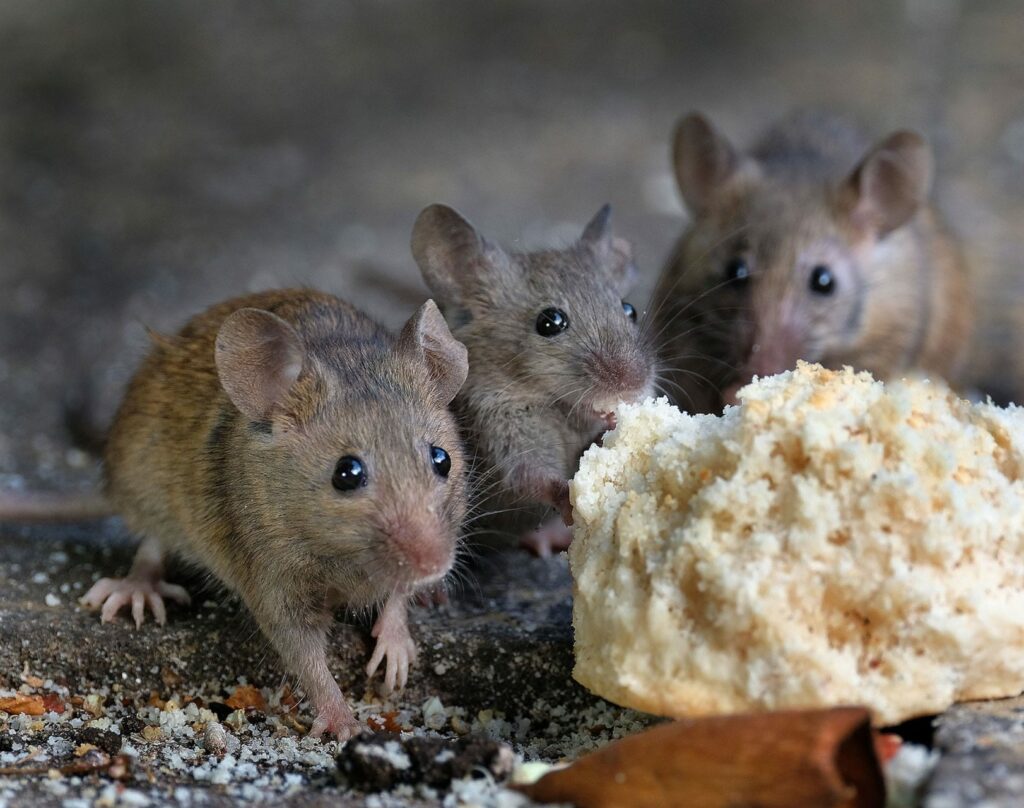
Contents
Finding a mouse, or even signs of mice, in your home can turn your world around. They are already inside now, but you want them out as soon as possible. One indoor mouse will inevitably lead to more, and they can bring with them destruction and disease.
One indoor mouse by itself is a problem, but because they can multiply fast, you do not want to delay in getting them out of your house. Mice can breed all year-round, and one female can produce up to 10 litters per year. With an average of six babies in each litter, the population in your home could become 10 times larger in just three months.
The common house mouse may not be as dangerous as a deer mouse, but the potential for disease is still present. Mice can spread diseases such as hantavirus, salmonellosis and listeria via droppings, urine, saliva, or their nesting materials. A major infestation could make catching one of these deadly diseases rise to a higher risk.
Mice will chew on almost anything, which is one way they could have gotten inside. But beyond gaining entry to your home, mice will still try to get their teeth into anything. They can chew through soft concrete, wood, drywall, rubber, plastic, insulation, and aluminum. In a more dangerous scenario, mice can even chew through gas lines or electrical wiring, which creates an unseen fire hazard.
A typical house mouse is only 1-2 inches long without its tail, and that small size allows it to fit almost anywhere in your home. They are a brown, grayish color, with a blunt snout, large ears and small eyes. As the weather becomes colder and outside food sources become scarce, house mice look to set up their nests near other potential food and water sources, such as your home.
To stop mice from coming inside is to eliminate any entry points they could find. Inspect the areas around your house and seal cracks in the foundation, and cracks in the wall where vents or pipes enter your home. Use weather stripping around doors and windows, and be sure that when a door is closed, it creates a seal against the threshold.
Getting better at cleaning up around the house can’t completely stop a mouse from entering, but it can help prevent that problem. Loose crumbs are easy pickings for a mouse, but they can also make their way into your cabinets or pantry and take advantage of food that isn’t properly stored. Keep your garbage secured as well, as their teeth can make quick work of a plastic trash bag.
If you notice the potential of the problem developing, using mouse traps will also help. The classic wooden snap trap can be effective, but you should not underestimate a mouse’s infestation. A variety of traps exist, like bait traps, live traps, and glue traps. Some mice are smart enough to avoid certain traps, and if you need to catch multiple mice, multiple traps are necessary.
Even with the knowledge of how to prevent and remove some mice, keeping your home 100 percent protected can be tough. That is where Van Den Berge Pest Control comes in. For help to control the mouse population in and around your home, contact the pest control specialists at Van Den Berge Pest Control at 616-392-7367.
Trust the locally owned, widely renowned experts at Van Den Berge Pest Control for all of your pest needs. With over 100 years of combined experience throughout the Holland, MI-based pest control team, you know you’re in expert hands with our state-certified experts.
Recent Posts
5 Tips for Choosing Top Termite Control Services
Choosing a termite control service is like selecting a skilled surgeon for a delicate operation;
5 Tips for Choosing Local Tick Exterminators
Finding the perfect local tick exterminators can feel like searching for a needle in a
Why Are Proper Tick Removal Techniques Essential for Pets?
Proper tick removal techniques are essential for your pet’s health. Ticks can transmit serious diseases
